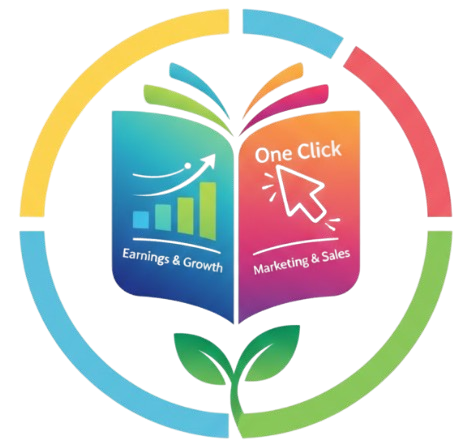If you’ve started publishing books on Amazon KDP (Kindle Direct Publishing), you probably know that hitting that “Publish” button feels amazing 😍 — but what comes next is just as important: tracking how your book is doing!
Many new authors skip this step because they think it’s complicated. The truth is — it’s not! Monitoring your KDP sales and performance helps you understand what works and what doesn’t. And once you get the hang of it, you can actually use this data to grow your income month after month.
So, let’s go step-by-step into how to check your sales, analyze performance, and use smart tools to make better publishing decisions.
Why tracking your KDP sales matters
Here’s a simple truth: you can’t improve what you don’t track.
If you don’t know which books are selling or which keywords are performing best, you’re basically driving blindfolded.
Tracking your sales helps you:
-
See which books or formats (Kindle, paperback, hardcover) sell the most.
-
Understand your daily, weekly, and monthly income trends.
-
Identify the best-performing categories or keywords.
-
Optimize book descriptions and covers based on real results.
-
Plan future books based on what your readers actually like.
Even if you publish just one book, checking your performance regularly helps you make smart moves instead of random guesses.
Accessing your KDP sales dashboard
The first and most direct way to track your sales is through your KDP dashboard.
Here’s how you can do it:
-
Go to https://kdp.amazon.com/ and sign in.
-
Click on Reports in the top navigation bar.
-
You’ll land on the Sales Dashboard.
Now you’ll see your data in different sections:
-
Units Sold: Shows how many eBooks and paperbacks you’ve sold.
-
Pages Read (KENP): If you’re in Kindle Unlimited (KU), you’ll see how many pages readers have read.
-
Royalties Earned: Displays your earnings for a specific period.
-
Geographic Sales: Breaks down sales by country.
You can adjust the date range (daily, weekly, monthly, lifetime) and filter by book title, format, or marketplace.

Understanding the KDP reports section
The “Reports” area is where you’ll find detailed information beyond just the graphs.
Here’s a breakdown of what each report shows:
| Report Name | What It Shows | Why It’s Useful |
|---|---|---|
| Sales Dashboard | Visual graph of units sold and pages read | Quick overview of performance |
| Historical | Past months’ sales and royalties | Great for trend analysis |
| Payments | Details of payouts from Amazon | Helps you track income accurately |
| Promotions | Tracks free or discounted campaigns | Perfect for testing marketing results |
| Pre-orders | Tracks upcoming releases | Useful if you’re launching new books |
| Orders and Returns | Sales and refund data | Understand reader behavior |
💡 Tip: Try exporting your reports monthly as a .CSV file — this lets you track long-term growth in Excel or Google Sheets.
Tracking royalties and payment schedule
Another crucial thing to know is when and how you get paid.
Amazon KDP pays royalties about 60 days after the end of the month in which the sale occurred.
For example, if you earn $100 in January, you’ll likely receive it in late March.
Royalties vary depending on your book format and price range:
| Format | Royalty Rate | Conditions |
|---|---|---|
| eBook | 35% or 70% | Based on price and region |
| Paperback | Around 60% | Minus printing cost |
| Hardcover | Around 60% | Minus printing cost |
| KENP (Kindle Unlimited) | Varies | Paid per page read |
To see your payments:
-
Go to the Payments tab in Reports.
-
You’ll see total royalties, payment dates, and currencies.
Using Kindle Unlimited (KU) performance data
If your book is part of Kindle Unlimited, tracking KENP Reads is super important.
This number tells you how many pages of your book readers are actually finishing.
Let’s say your book is 200 pages long, and Amazon reports 400 pages read.
That means two full reads — nice, right? 📚
More reads = higher engagement = better ranking in Kindle search results.
You can see daily page reads on your Sales Dashboard and even export them for detailed tracking.
Tracking performance with Amazon Author Central
Besides your KDP dashboard, you can also use Amazon Author Central (https://author.amazon.com/) to view your performance from a different angle.
Once you set up your profile there, you’ll get access to:
-
BookRank: Shows how your book is ranked among others in the same category.
-
Customer Reviews: Helps you understand reader feedback.
-
Sales Rank Graphs: Visualizes performance over time.
💬 Reader reviews are gold — sometimes, one review can teach you more than 100 sales numbers.
If a reader says your pacing is slow or your cover doesn’t match the story, take that feedback seriously.
Third-party tools to track KDP sales and analytics
Amazon’s tools are useful, but they can be limited if you’re managing multiple books.
That’s where third-party apps come in handy.
Here are some of the most trusted ones:
| Tool Name | Key Features | Best For |
|---|---|---|
| BookReport | Real-time sales, royalties, graphs | Easy visualization |
| KindleTrends | Market and keyword insights | Tracking genre trends |
| Tangent Template Analytics | Designed for low-content books (journals, planners) | Low-content creators |
| Publisher Rocket | Keyword and category data | Finding profitable niches |
| KDSpy | Competitor tracking and ranking | Market research |
Most of these tools connect directly to your KDP account, making it easier to see everything in one place.
Some are free with limited features, while others have premium versions with deep analytics.
How to analyze your KDP performance
Once you have all the data — sales, royalties, page reads — it’s time to make sense of it.
Here’s how you can analyze your KDP performance like a pro:
-
Compare monthly trends – Are your sales growing or declining?
-
Find your best categories – Which genres or niches are bringing more sales?
-
Evaluate marketing results – Did your paid ads increase your sales?
-
Study pricing impact – Try small price changes and compare results.
-
Track reviews and ratings – Notice how they affect performance.
You can even create a simple sheet like this:
| Month | Units Sold | Royalties | KENP Pages Read | Bestselling Title |
|---|---|---|---|---|
| January | 80 | $120 | 4,000 | The Quiet Mind |
| February | 95 | $142 | 4,800 | The Quiet Mind |
| March | 110 | $168 | 5,200 | The Quiet Mind |
This gives you a quick snapshot of what’s working and helps you forecast future earnings.
Common mistakes to avoid when tracking KDP sales
Let’s be real — everyone makes a few mistakes in the beginning.
Here are some to avoid:
-
❌ Checking sales every 5 minutes — it can drive you crazy!
-
❌ Ignoring page reads (they matter more than you think).
-
❌ Forgetting to track marketing campaigns.
-
❌ Confusing “estimated royalties” with “actual payments.”
-
❌ Not comparing performance by region (some markets perform better).
Stay patient — KDP income grows with consistency, not overnight luck.
Tips to boost your sales performance
If your numbers aren’t where you want them to be, here’s how to improve:
-
Optimize your book title and subtitle with strong keywords.
-
Design an eye-catching book cover (you can hire freelancers or use Canva).
-
Write a compelling book description — make readers curious.
-
Run Amazon Ads with small budgets to test audiences.
-
Encourage reviews through social media or email lists.
-
Publish regularly — more books = more visibility.
Remember: consistency beats luck every time.
Keeping motivation while tracking slow sales
It’s easy to get discouraged when your graph barely moves.
But here’s the thing: every top KDP author started there.
Even if you sell 5 books this month, that’s 5 people who chose your story over millions of others. That’s something to be proud of! 🌟
Keep learning, testing, and improving. Over time, those small wins compound.
FAQs about Tracking KDP Sales and Performance
Q1: How often does KDP update sales reports?
Sales are updated almost in real time — usually within a few hours after purchase. However, KENP reads can take up to 24 hours to appear.
Q2: Can I see which keywords bring sales?
Not directly on KDP, but you can use tools like Publisher Rocket to find which keywords are helping your books rank and sell.
Q3: Why are my royalties lower than expected?
Amazon deducts printing costs (for paperbacks) and applies royalty rules based on the region and price. Always double-check your book’s pricing page.
Q4: Do free downloads count as sales?
No, free downloads during promotions don’t count as sales, but they can improve your ranking and visibility temporarily.
Q5: Can I track sales by country?
Yes! In your KDP dashboard, you can see the sales breakdown by region, which helps you understand where your readers are coming from.
Final thoughts
Tracking your KDP sales and performance isn’t just about numbers — it’s about understanding your readers and making smarter publishing decisions.
The more attention you pay to your data, the more control you have over your income and growth. So, whether you’re selling journals, novels, or children’s books — keep learning from your stats and improving your craft.
Stay patient, stay creative, and remember — every sale is a small step toward your publishing dream. 🚀




